List of author's articles

150 years ago, Europe went astray
On the evening of January 18, 1871, the windows of the Palace of Versailles shone like in the days of Louis XIV's greatest glory. However, the visitors who rejoiced inside were not the courtiers of Emperor Napoleon III, but soldiers. However, they did not have French uniforms, but Prussian, Saxon, Bavarian, Württenberg and other armies of the North German Confederation , which conquered France and besieged Paris, except for the fortified belt of Pas-de-Calais. During the siege, Versailles served as the main Prussian tent, and that evening there was an event that completed the Prussian efforts to unite Germany. A moment ago, in the great Mirror Hall of the Palace of the French Kings, in the presence of German princes, field marshals, generals and other high-ranking staff officers, King William I of Prussia was proclaimed Emperor of the New German Empire and Otto von Bismarck appointed Reich Chancellor.

311th (Czechoslovak) Bomber Squadron RAF celebrates its birthday
After the Czechoslovak pilots fled from demoralized and defeated France to England in the early summer of 1940, the Churchill spirit of defiance that prevailed in this country did not allow them to pursue defeatist ideas for a long time. After the 310th Fighter Squadron (established on 10 July 1940), the first Czechoslovak bomber squadron has been assembled, armed with much more complicated aircraft than the Hurricane fighters ...
88 years of unlimited submarine warfare

A clumsy Pacific War worker

A man with an indian name
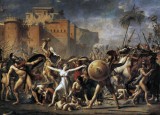
About one pacifistic delusion

Allah's Prophet

American destroyer during World War II
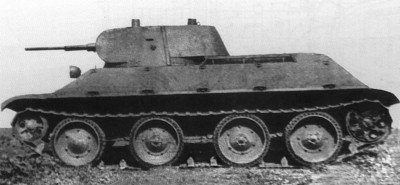
American roots of the Soviet T-34 tank

American war, European peace

Battle of the PQ-16 convoy

Churchill's "tanks"

Confusion in the signals cost British America
In early September, a naval battle took place at the Chesapeake Bay, in which the British failed to defeat the French, which led to the surrender of the last British army in the rebellious thirteen colonies and later forced the British government to recognize United States independence in 1783.

Conquest of Guam

Czech legend in the English sky
He was a pilot who did not exist before and will not exist. He alone engaged in a duel with the predominance of the enemy. He flew alone, unexpectedly attacking the Germans. He was the best shooter - whenever he pulled the trigger of his machine gun, a German crashed down ...

Do you know the difference between commandos, rangers and green berets?

Fratricidal July 1940

Germans on the Volga
After the frontal attack on Moscow failed in the autumn of 1941, Hitler decided on a side bypass from the south as part of the planned summer offensive of 1942. On June 28, 1942, the German Army Group "A" launched an attack on Voronezh, and the advance then turned south along the Don. Before its mouth into the Sea of Azov, this river forms a large bend to the east, which at the extreme point approaches up to 45 km to the Volga, just in the Stalingrad area. One of Stalin 's buildings of "communism" was the Volga - Don canal, which in these places crossed the neck and amplified the importance of the city as a transport hub and a massive industrial base.

Half a millennium of European conquests

He was also Czech
Vašátko became a fighter ace twice: first in the Battle of France and again in the RAF. Among RAFVR Czechoslovak fighter aces, only Sqn Ldr Karel Kuttelwascher and Sgt Josef František shot down more aircraft than Vašátko. As a Wing Commander, Vašátko was one of the RAF's most senior Czechoslovak officers in front-line service. Vašátko had just been awarded his DFC on the day of his death. The Inspector-General of the Czechoslovak Air Force, Air Commodore Karel Janoušek, called Vašátko's death "the most cruel blow to our entire air force".

Islamist Nazism

Jan Žižka

Katyusha and their liquid-based cousins 1

Katyusha and their liquid-based cousins 2

Katyusha and their liquid-based cousins 3

Katyusha and their liquid-based cousins 4

Katyusha and their liquid-based cousins 5

Katyusha and their liquid-based cousins 6

Knights of Heaven I

Make your cannon

Malbruk goes to war

Man with pilot license No. 64

Metternich
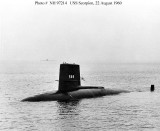
One and a half century of steel coffins
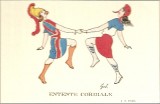
One hundred and twenty years of the Cordial Agreement
This year marks exactly 120 years since the history of Europe changed irreversibly. To the world's astonishment, on 8 April 1904, Great Britain and France signed a treaty of cooperation in which the two powers agreed on spheres of influence. To demonstrate the consensus, which was a severe blow to German foreign policy, the signatories called the treaty Entente cordiale - the Cordial Agreement.

Operation Bagration

Operation Hydra
According to intelligence legend, it was the famous agent A-54 of the Czechoslovak intelligence service, who in the so-called "Oslo report" in the autumn of 1939 alerted the Allies to the development of a secret weapon against England in the form of "air torpedo, which turns into a plane by ejection", and to a research base on the Baltic coast.
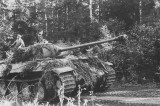
Operation Zitadelle

Pearl Harbor paradoxes
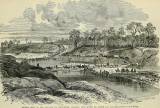
Red River Campaign
The cause of the American Civil War, which broke out in 1861, was a dispute over the nature of the newly annexed territories west of the Mississippi, whether or not slavery would be allowed in them. Initially, the war brought numerical victories to the seceded Southern Confederacy, but by 1863 the greater economic potential of the industrial North had already become apparent. The fighting was fought over a vast territory, a fact that often escapes Europeans. It was fought from the Potomac River to the Gulf of Mexico, from Memphis on the Mississippi to Charleston on the Atlantic coast, over an area of 1,500 by 1,000 miles ...

Samurai against fate
As cliché as it sounds, Admiral Isoroku Yamamoto and one of the greats of naval history was indeed born into the ancient Takano samurai family in 1884. He was the child of his father's second marriage, and the proud Mr Takano, who was already 56 when his son was born, called him "sixty-six" - isoroku in Japanese. The Takano family were in disfavor as Isoroku's father fought on the side of the shogunate against the new Meiji government that opened Japan wide open to Western technology and modernization in the late 19th century. He was left with no choice but to earn a modest living as a swordsman in Nagaoka, in the north of Honshu.
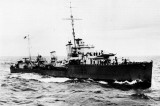
Summer 1943 - defeat of wolf packs
The German naval offensive, launched immediately in September 1939 by the Kriegsmarine, was named the Battle of the Atlantic. Because its goal was to cut off Atlantic shipping lines to Britain and cut off the country from raw materials and food. The main German weapons of this battle were submarines, although the Kriegsmarine initially deployed surface vessels, from battleships to auxiliary cruisers, and Luftwaffe and aircraft. However, after the British sank the isolated surface invaders (Graf Spee, Bismarck, Scharnhorst) or blocked the bases (Tirpitz), the weight of the whole battle lay on U-boats from 1942.

Supplement to the celebrations of the Great October Socialist Revolution

That American general

The battle of Moscow
The conquest of Moscow was part of the "Barbarossa" plan, and the German Army Group Centre launched attack on Moscow on September 30, 1941 with converging maneuvers from the north and south. 80 divisions were set aside for the operation, of which 14 were tank and 8 motorized. On October 2, the Germans broke through the Russian defense in the most important directions (Vyazma, Bryansk, Orel) and on October 16 they continued the attack ...

The clutches of the American eagle I

The clutches of the American eagle II

The clutches of the American eagle III

The clutches of the American eagle IV

The clutches of the American eagle V

The clutches of the American eagle VI

The clutches of the American eagle VII

The fall of Paris
After the May disaster in the north the French had some 61 divisions, covering the line of length 300 km from the Maginot line to the east up to the sea on the west. Learning from the defeats, the French command was trying to build a defense in great depth using the support points are adapted to a circular defense.

The great wizard of technology
On the one hand, the design of the famous VW "Beetle", which with 22 million units produced became the absolute most successful vehicle in the history of car, on the other hand, a dedicated Hitler armorer who designed one of the most difficult versions of the heaviest tank "Königstiger" and "Elephant", nicknamed "Ferdinand" in honor of the creator - this is not only the technical but also the human scope of the story of this great wizard of technology, which thus agrees with the Faustian fate of another German, Wernher von Braun.

The man who overcame Dönitz
In the early 1920s, the British Admiralty declassified documents stating that, despite all efforts, the British shipbuilding industry was unable to cover the losses of shipping space caused by Kaiser submarines, and that it would not have recovered them until 1921 at best. Captain Karl Dönitz carefully released from captivity, and after becoming commander of the U-Bootwaffe on September 1, 1939, applied the strategy created on this fact when deploying U-boots in the Battle of the Atlantic. It was estimated that bringing the United Kingdom to its knees would require monthly losses of around 500,000 GRT.
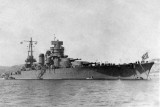
The mystery of Novorossiysk explained?
In 1947, the USSR took the battleship "Giulio Cesare" from the booty of the Italian fleet and, under the name "Novorossiysk", included it in the Black Sea Fleet based in Sevastopol. There, also on the evening of October 28, 1955, the ship docked after a one-day artillery exercise. Since Captain Kuchta was on vacation, the anchor maneuver was led by his deputy, Lieutenant Commander Khurshudov. He did not have the ship in his hand, he misjudged its length and the time the anchor was lowered. As a result, the "Novorossiysk", the bow of which held the anchor, lay much closer to the stern of the mooring buoy than usual. However, Churshudov agreed with the technical staff of the base that the position of the battleship will be corrected in the morning.

The myth of Yalta

The Nibelungs on air
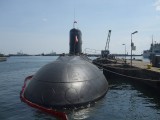
The Polish submarine Orzeł belongs to the Kilo class
If the Foxtrot class submarines belonged to the 2nd post-war generation of conventional submarines, their development began in 1954 and were manufactured until 1983, then the Kilo class diesel-electric submarines marked a turning point in the construction of non-nuclear boats.

The secret of Kursk will remain a secret until the next century

The secret of Saint Exe

They called her Hiroshima

They were called Higgins

Tiger and dragon in ex-Soviet armor

Uncertainity around uranium munitions

Victory in the Atlantic

Wellington - the man who defeated Napoleon

Winner from Tsushima I

Winner from Tsushima II
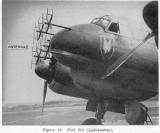
Year 1943 in the air
Plans for air warfare against the Axis powers for another war year were born at a conference in Casablanca in January 1943. Among them was an agreement on a combined bombing offensive by the CBO of the Anglo-American Air Force against German targets with the following priorities: submarine bases and shipyards, aviation industry, major transport hubs, refineries and synthetic gasoline production, ball bearing plants and the armaments industry.
Join us
We believe that there are people with different interests and experiences who could contribute their knowledge and ideas. If you love military history and have experience in historical research, writing articles, editing text, moderating, creating images, graphics or videos, or simply have a desire to contribute to our unique system, you can join us and help us create content that will be interesting and beneficial to other readers.
Find out more